With the initial fruit of Intel's ultrabook initiative having dropped nearly a year ago, the category is now home to a veritable cornucopia of machines from practically every PC maker. While this has produced some highly attractive products, it has also muddied what was once a clear mission statement.
Ultrabooks were originally pitched as Windows-based competitors to Apple's MacBook Air: thin, light, sexy and speedy with an all-day battery life for less than $1,000 – a challenging feat to be sure, but one that many companies quickly overcame, including HP with its ~$900 Folio 13.
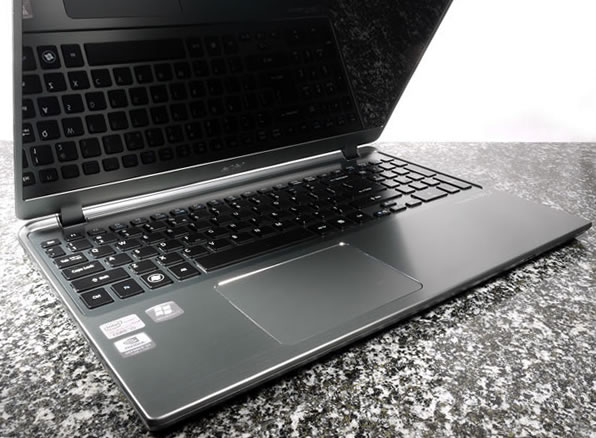
With another year's worth of engineering and the more efficient Ivy Bridge architecture to work around, it should be even easier for system builders to meet or exceed Intel's guidelines. On paper, the second wave of ultrabooks should be sleeker, faster, cheaper, more portable, and more autonomous.
Acer Aspire TimelineU M5-581TG-6666 - $830
- 15.6" 1366x768 LED-backlit display
- Intel Core i5-3317U (1.7 - 2.6GHz)
- Nvidia GeForce GT 640M LE 1GB
- 6GB of DDR3 RAM
- 20GB SSD + 500GB 5400RPM HDD
- 8X double-layer DVD drive (left)
- SD/MMC card reader, audio jack (right)
- 1 USB 2.0, 2 USB 3.0, HDMI, LAN (back)
- 802.11b/g/n, Bluetooth 4.0+HS
- 1.3-megapixel (1280x1024) webcam
- Backlit chiclet keyboard (white light)
- 3-cell 4850mAh battery (8 hours)
- 14.43" x 10.05" x 0.79/0.81", 5.07lbs
And they are. Those attributes have improved, it's just tough to find them all in one machine and the systems that come closest in raw specifications typically exceed $1,000. With so many heavyweights chomping at what is a relatively small slice of pie, their attempts at differentiation are to be expected.
More than last year, 2012's ultrabooks have been and will continue to be about tradeoffs: low-res screens vs. high-res, TN panels vs. IPS, snappy SSDs vs. capacious HDDs, dual-core CPUs vs. quad-core, 2GB vs. 8GB, power-sipping IGPs vs. muscle-bound GPUs, mainstream vs. premium pricing, and so on.
In other words, shopping for an ultrabook is eerily similar to shopping for any other notebook, which raises concerns about the long-term marketing potential of ultrabooks as a special sub-classification of premium laptops – a subject worth exploring, but we'll move on before your eyes glaze over.
Acer's new TimelineU makes its own compromises. Our review unit touts a full-size backlit keyboard, 500GB of storage, a GeForce GT 640M LE GPU, an optical drive, an eight-hour battery life and an attractive $830 price tag. Naturally, the question is: what's the catch? Let's get to the bottom of that...
Externals & Usability
The TimelineU M5's brushed aluminum surface maintains a professional appearance. Looking at the machine from the front or either side reveals clean lines and minimalistic styling. This is at least partly because virtually all of the system's I/O ports are located on the back instead of the sides.
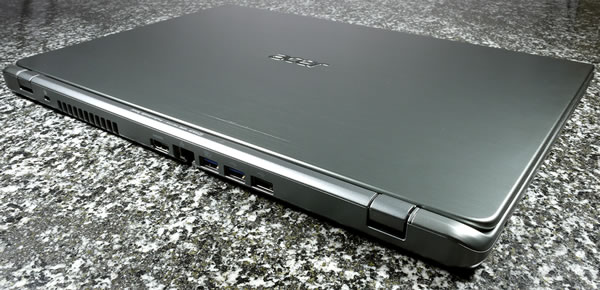
Rear-mounted USB, HDMI and Ethernet ports make for a neater presentation, but I found it difficult to use those connectors without flipping the M5 over and this was particularly annoying because its L-shaped power connector liked to grab the edge of my desk mid-rotation, often disconnecting it.
As noted in the spec list, the left side has an optical drive, while the right side carries a multi-card reader and an audio jack. For whatever reason, Acer has placed the M5's power button on its front edge instead of underneath its display. Besides causing brief confusion, this hasn't been an issue.
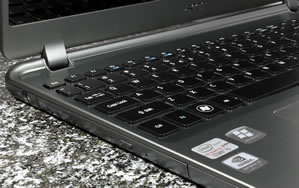
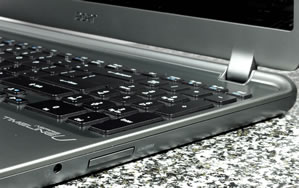
Opening the TimelineU shows a 15.6-inch glossy display, an aluminum deck, a full-size backlit keyboard with a numpad, a large off-center touchpad and the obligatory brand decals. We'd rather there not be any stickers, but Acer has at least used monochrome colors that blend into the design pretty well.
The display flexes a little while it's being opened and as with most glossy panels, there's a noticeable amount of glare when in a well-lit environment, while low-light situations can result in reflections from the backlit keyboard if you're using the system on certain angles. Not a major issue, but worth noting.
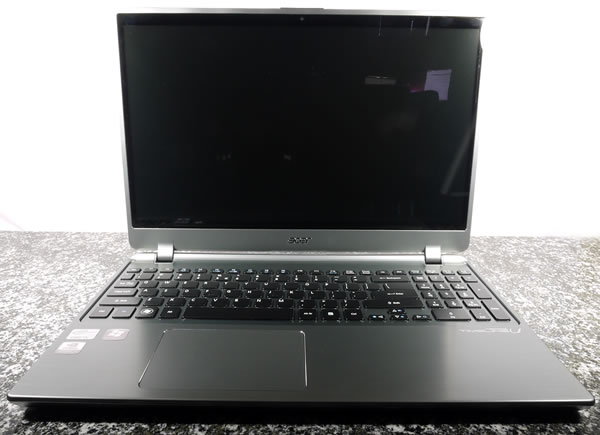
Many users seem vehemently opposed to 1366x768 laptop displays – especially when discussing 15.6-inchers – but I don't necessarily have a problem with the M5's resolution. That said, I believe higher-res options should be more broadly available and hopefully this will be the case in the next 6-12 months.
Although the M5's keys are a little small and mushy for my taste, they are well spaced and easy to type on (I spent 15 minutes running typing tests and I had no trouble achieving my usual WPM). Acer also did a decent job ensuring each key is evenly backlit – it's not uncommon for larger keys to have dim spots.
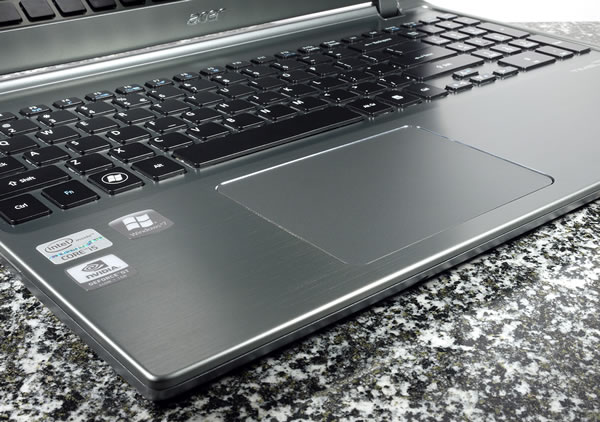
The multitouch trackpad is very slightly recessed, it's large, it reads gestures well and it has a nice coating. I have no issues with the touchpad itself but it's situated a little too far to the left for me. My palm measures four inches wide and there's only about three inches of surface beside the touchpad.
Unless I'm very mindful about tilting my left hand, the base of my thumb and some of my palm rest on the touchpad. Fortunately, I use my right thumb to hit space when typing so it's not a problem then, but it results in various issues when using the touchpad with my right hand, especially with gestures.
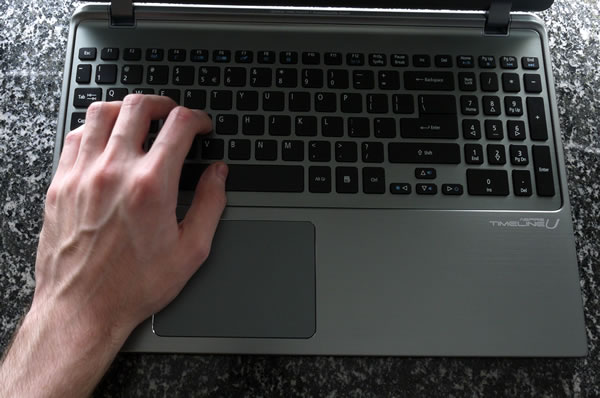
For instance, I frequently use two-finger swipe to scroll but it doesn't register, or I'll simply go to move the cursor and my left palm causes a pinch-to-zoom input, magnifying my desktop or browser. It has been enough of an annoyance that I wouldn't hesitate to return the M5 and opt for another machine.
That said, folks with smaller hands may not have an issue and for whatever it's worth, a quick search suggests the average male palm width is about 3.30 inches and 2.91 inches for females, so Acer's engineering team isn't exactly sleeping on the job. I'd still bust out a measuring tape before ordering.
